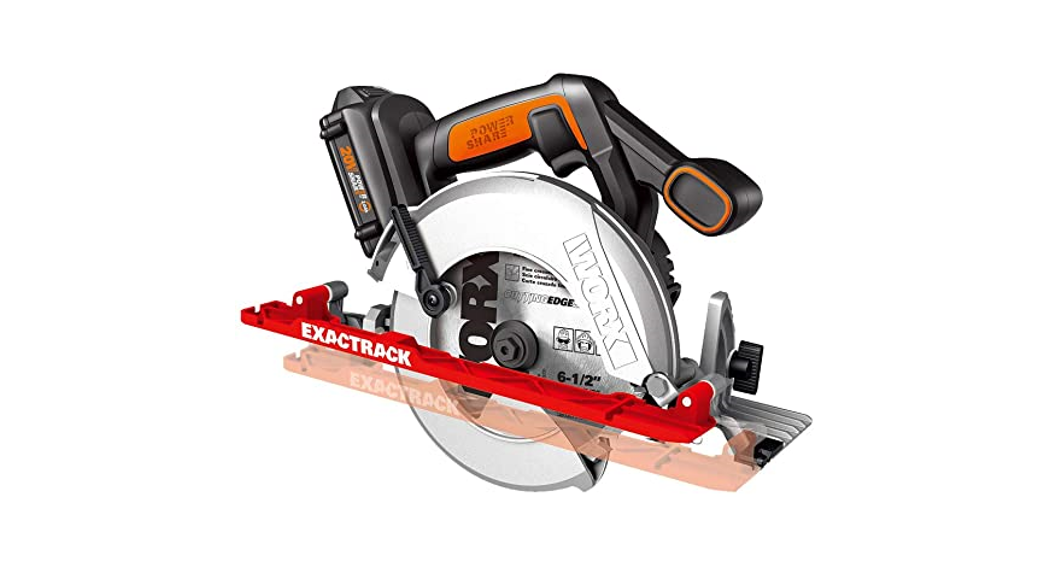
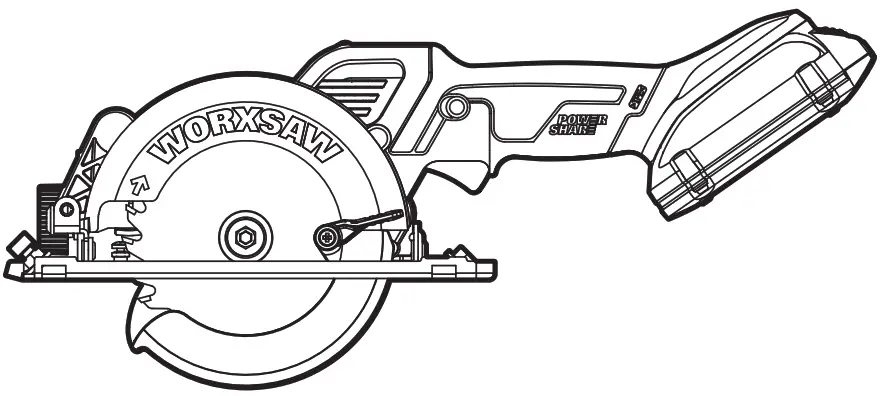
 |
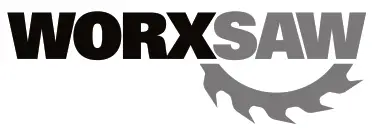 |
20V Cordless Brushless Circular saw – P03
 HELPLINE NUMBERWX531L WX531L.X
HELPLINE NUMBERWX531L WX531L.X
PRODUCT SAFETY
 WARNING: Some dust created by power sanding, sawing, grinding, drilling and other construction activities contains chemicals known to the State of California to cause cancer, birth defects, or other reproductive harm. Some examples of these chemicals are:
WARNING: Some dust created by power sanding, sawing, grinding, drilling and other construction activities contains chemicals known to the State of California to cause cancer, birth defects, or other reproductive harm. Some examples of these chemicals are:
- Lead from lead-based paints;
- Crystalline silica from bricks and cement and other masonry products;
- Arsenic and chromium from chemically treated lumber. Your risk from these exposures varies, depending on how often you do this type of work. To reduce your exposure to these chemicals: work in a well-ventilated area, and work with approved safety equipment, such as those dust masks that are specially designed to filter out microscopic particles.




GENERAL POWER TOOL SAFETY WARNINGS




SAFETY INSTRUCTIONS FOR ALL SAWS CUTTING PROCEDURES
a)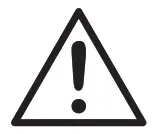

FURTHER SAFETY INSTRUCTIONS FOR ALL SAWS
Kickback causes and related warnings– kickback is a sudden reaction to a pinched, jammed, or misaligned saw blade, causing an uncontrolled saw to lift up and out of the workpiece toward the operator;– when the blade is pinched or jammed tightly by the kerf closing down, the blade stalls, and the motor reaction drives the unit rapidly back toward the operator;– if the blade becomes twisted or misaligned in the cut, the teeth at the back edge of the blade can dig into the top surface of the wood causing the blade to climb out of the kerf and jump back toward the operator.Kickback is the result of saw misuse and/or incorrect operating procedures or conditions and can be avoided by taking proper precautions as given below.a) Maintain a firm grip on the saw and position your arms to resist kickback forces. Position your body to either side of the blade, but not in line with the blade. Kickback could cause the saw to jump backward, but kickback forces can be controlled by the operator, if proper precautions are taken.b) When the blade is binding, or when interrupting a cut for any reason, release the trigger and hold the saw motionless in the material until the blade comes to a complete stop. Never attempt to remove the saw from the work or pull the saw backward while the blade is in motion or kickback may occur. Investigate and takecorrective actions to eliminate the cause of blade binding.c) When restarting a saw in the workpiece, center the saw blade in the kerf so that the saw teeth are not engaged in the material. If a saw blade binds, it may walk up or kick back from the workpiece as the saw is restarted.d) Support large panels to minimize the risk of blade pinching and kickback. Large panels tend to sag under their own weight. Supports must be placed under the panel on both sides, near the line of cut and near the edge of the panel.e) Do not use dull or damaged blades. Unsharpened or improperly set blades produce narrow kerf causing excessive friction, blade binding, and kickback.f) Blade depth and bevel adjusting locking levers must be tight and secure before making the cut. If blade adjustment shifts while cutting, it may cause binding and kickback.g) Use extra caution when sawing into existing walls or other blind areas. The protruding blade may cut objects that can cause kickback.
SAFETY INSTRUCTIONS FOR CIRCULAR SAW WITH INNER PENDULUM GUARD LOWER GUARD FUNCTION
a) Check the lower guard for proper closing before each use. Do not operate the saw if the lower guard does not move freely and close instantly. Never clamp or tie the lower guard into the open position. If the saw is accidentally dropped, the lower guard may be bent. Raise the lower guard with the retracting handle and make sure it moves freely and does not touch the blade or any other part, at all angles and depths of cut.b) Check the operation of the lower guard spring. If the guard and the spring are not operating properly, they must be serviced before use. The lower guard may operate sluggishly due to damaged parts, gummy deposits, or a build-up of debris.c) The lower guard may be retracted manually only for special cuts such as “plunge cuts” and “compound cuts.” Raise the lower guard by retracting the handle and as soon as the blade enters the material, the lower guard must be released. For all other sawing, the lower guard should operate automatically.d) Always observe that the lower guard is covering the blade before placing the saw down on the bench or floor. An unprotected, coasting blade will cause the saw to walk backward, cutting whatever is in its path. Be aware of the time it takes for the blade to stop after the switch is released.
ADDITIONAL SAFETY RULES FOR YOUR CIRCULAR SAW
- Only use saw blades recommended in the specification.
- Do not use any abrasive wheels.
- Use only blade diameter(s) in accordance with the markings.
- Identify the correct saw blade to be used for the material to be cut.
- Use only saw blades that are marked with a speed equal to or higher than the speed marked on the tool.
CUT-OFF MACHINE SAFETY
WARNINGSa) The guard provided with the tool must be securely attached to the power tool and positioned for maximum safety, so the least amount of wheel is exposed towards the operator. Position yourself and bystanders away from the plane of the rotating wheel. The guard helps to protect the operator from broken wheel fragmentsand accidental contact with the wheel.b) Use only bonded reinforced or diamond cut-off wheels for your power tool. Just because an accessory can be attached to your power tool, it does not assure safe operation.c) The rated speed of the accessory must be at least equal to the maximum speed marked on the power tool. Accessories running faster than their rated speed can break and fly apart.d) Wheels must be used only for recommended applications. For example: do not grind with the side of the cut-off wheel. Abrasive cut-off wheels are intended for peripheral grinding, side forces applied to these wheels may cause them to shatter.e) Always use undamaged wheel flanges that are of the correct diameter for your selected wheel. Proper wheel flanges support the wheel thus reducing the possibility of wheel breakage.f) Do not use worn-down reinforced wheels from larger power tools. Wheels intended for a larger power tool are not suitable for the higher speed of a smaller tool and may burst.g) The outside diameter and the thickness of your accessory must be within the capacity rating of your power tool. Incorrectly sized accessories cannot be adequately guarded or controlled.h) The arbor size of wheels and flanges must properly fit the spindle of the power tool. Wheels and flanges with arbor holes that do not match the mounting hardware of the power tool will run out of balance, vibrateexcessively and may cause loss of control.i) Do not use damaged wheels. Before each use, inspect the wheels for chips and cracks. If a power tool or wheel is dropped, inspect for damage or install an undamaged wheel. After inspecting and installing the wheel, position yourself and bystanders away from the plane of the rotating wheel and run the power tool at maximum no-load speed for one minute. Damaged wheels will normally break apart during this test time.j) Wear personal protective equipment. Depending on the application, use a face shield, safety goggles, or safety glasses. As appropriate, wear a dust mask, hearing protectors, gloves, and shop apron capable of stopping small abrasive or workpiece fragments. The eye protection must be capable of stopping flying debris generated by various operations. The dust mask or respirator must be capable of filtrating particles generated by your operation. Prolonged exposure to high-intensity noise may cause hearing loss.k) Keep bystanders a safe distance away from the work area. Anyone entering the work area must wear personal protective equipment. Fragments of workpiece or of a broken wheel may fly away and cause injury beyond the immediate area of operation.l) Hold the power tool by insulated gripping surfaces only, when performing an operation where the cutting accessory may contact hidden wiring. Cutting accessory contacting a “live” wire may make exposed metal parts of the power tool “live” and could give the operator an electric shock.m) Position the cord clear of the spinning accessory. If you lose control, the cord may be cut or snagged and your hand or arm may be pulled into the spinning wheel.n) Never lay the power tool down until the accessory has come to a complete stop. The spinning wheel may grab the surface and pull the power tool out of your control.o) Do not run the power tool while carrying it at your side. Accidental contact with the spinning accessory could snag your clothing, pulling the accessory into your body.p) Regularly clean the power tool’s air vents. The motor’s fan will draw the dust inside the housing and excessive accumulation of powdered metal may cause electrical hazards.q) Do not operate the power tool near flammable materials. Sparks could ignite these materials.r) Do not use accessories that require liquid coolants. Using water or other liquid coolants may result in electrocution or shock.
FURTHER SAFETY INSTRUCTIONS FOR ABRASIVE CUTTING-OFF OPERATIONS
Kickback and related warningsKickback is a sudden reaction to a pinched or snagged rotating wheel. Pinching or snagging causes rapid stalling of the rotating wheel which in turn causes the uncontrolled power tool to be forced in the direction opposite of the wheel’s rotation at the point of the binding.
For example, if an abrasive wheel is snagged or pinched by the workpiece, the edge of the wheel that is entering into the pinch point can dig into the surface of the material causing the wheel to climb out or kick out. The wheel may either jump toward or away from the operator, depending on the direction of the wheel’s movement at the point of pinching. Abrasive wheels may also break under these conditions.
Kickback is the result of power tool misuse and/or incorrect operating procedures or conditions and can be avoided by taking proper precautions as given below.
a) Maintain a firm grip on the power tool and position your body and arm to allow you to resist kickback forces. Always use an auxiliary handle, if provided, for maximum control over kickback or torque reaction during start-up. The operator can control torque reactions or kickback forces if proper precautions are taken.b) Never place your hand near the rotating accessory. The accessory may kick back over your hand.c) Do not position your body in line with the rotating wheel. Kickback will propel the tool in a direction opposite to the wheel’s movement at the point of snagging.d) Use special care when working corners, sharp edges, etc. Avoid bouncing and snagging the accessory. Corners, sharp edges, or bouncing have a tendency to snag the rotating accessory and cause loss of control orkickback.e) Do not attach a saw chain, woodcarving blade, a segmented diamond wheel with a peripheral gap greater than 10 mm, or a toothed saw blade. Such blades create frequent kickback and loss of control.f) Do not “jam” the wheel or apply excessive pressure. Do not attempt to make an excessive depth of cut.Overstressing the wheel increases the loading and susceptibility to twisting or binding of the wheel in the cut and the possibility of kickback or wheel breakage.g) When the wheel is binding or when interrupting a cut for any reason, switch off the power tool and hold the power tool motionless until the wheel comes to a complete stop. Never attempt to remove the wheel from the cut while the wheel is in motion otherwise kickback may occur. Investigate and take corrective action to eliminate the cause of wheel binding.h) Do not restart the cutting operation in the workpiece. Let the wheel reach full speed and carefully re-enter the cut. The wheel may bind, walk up or kick back if the power tool is restarted in the workpiece.i) Support panels or any oversized workpiece to minimize the risk of wheel pinching and kickback. Large workpieces tend to sag under their own weight. Supports must be placed under the workpiece near the line of cut and near the edge of the workpiece on both sides of the wheel.j) Use extra caution when making a “pocket cut” into existing walls or other blind areas. The protruding wheel may cut gas or water pipes, electrical wiring, or objects that can cause kickback.
ADDITIONAL SAFETY RULES:
- Always wear a dust mask.SAFETY WARNINGS FOR BATTERY PACKa) Do not dismantle, open or shred battery pack.b) Do not expose the battery pack to heat or fire. Avoid storage in direct sunlight.c) Do not short-circuit a battery pack. Do not store battery packs haphazardly in a box or drawer where they may short-circuit each other or be short-circuited by other metal objects. When the battery pack is not in use, keep it away from other metal objects, like paper clips, coins, keys, nails, screws, or other small metal objects, that can make a connection from one terminal to another. Shorting the battery terminals together may cause burns or fire.d) Do not remove the battery pack from its original packaging until required for use.e) Do not subject the battery pack to mechanical shock.f) In the event of battery leaking, do not allow the liquid to come in contact with the skin or eyes. If contact has been made, wash the affected area with copious amounts of water and seek medical advice.g) Observe the plus (+) and minus (–) marks on the battery back and equipment and ensure correct use.h) Do not use any battery pack which is not designed for use with the equipment.i) Keep the battery pack out of the reach of children.j) Seek medical advice immediately if a cell or battery has been swallowed.k) Always purchase the battery pack recommended by the device manufacturer for the equipment.l) Keep the battery pack clean and dry.m) Wipe the battery pack terminals with a clean dry cloth if they become dirty.n) Battery pack needs to be charged before use. Always use the correct charger and refer to the manufacturer’s instructions or equipment manual for proper charging instructions.o) Do not leave the battery pack on prolonged charge when not in use.p) After extended periods of storage, it may be necessary to charge and discharge the battery pack several times to obtain maximum performance.q) Battery pack gives its best performance when it is operated at normal room temperature (68°F ± 9°F).r) When disposing of battery packs, keep battery packs of different electrochemical systems separate fromeach other.s) Recharge only with the charger specified by WorxNITRO. Do not use any charger other than that specifically provided for use with the equipment. A charger that is suitable for one type of battery pack may create a risk of fire when used with another battery pack.t) Retain the original product literature for future reference.u) Use only the battery pack in the application for which it was intended.v) Remove the battery pack from the equipment when not in use.w) Dispose of properly.
SYMBOLS
  |
To reduce the risk of injury, the user must read the instruction manual |
   |
Warning |
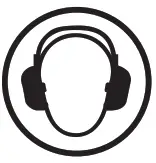  |
Wear ear protection |
  |
Wear eye protection |
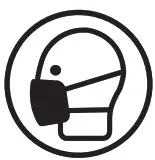  |
Wear dust mask |
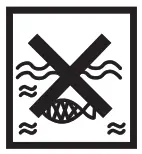  |
Batteries may enter the water cycle if disposed of improperly, which can behazardous for the ecosystem. Do not dispose of waste batteries as unsorted municipal waste. |
| Do not burn | |
  |
Li-Ion battery, the battery must be recycled |
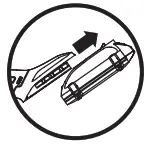  |
Make sure the battery is removed prior to changing accessories |
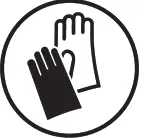  |
Wear protective gloves |
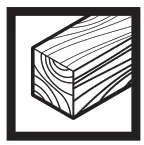  |
Wood |
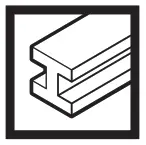  |
Metal |
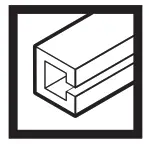  |
Aluminum |
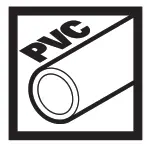  |
Plastic |
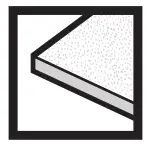  |
Tile |
  |
Incorrect |
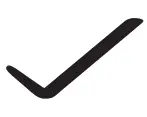  |
Correct |
| Lock | |
| Unlock | |
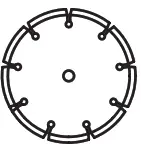  |
Abrasive cutting disc |
  |
HCS blade |
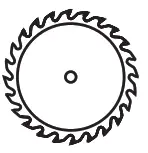  |
TCT blade |


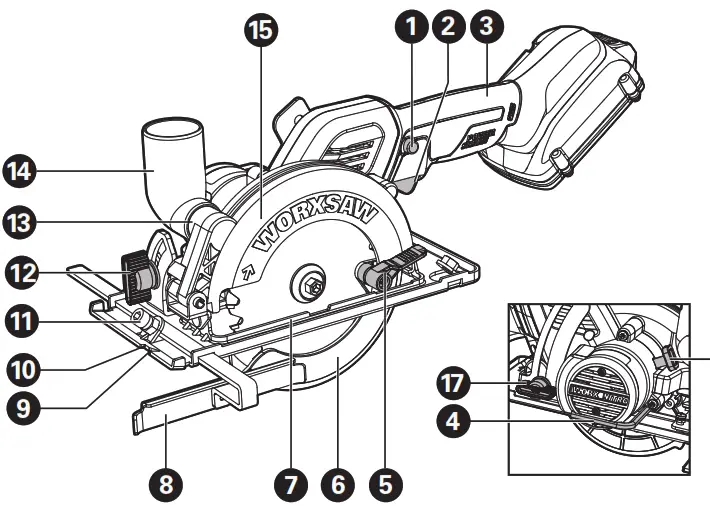



COMPONENT LIST
| 1. SAFETY SWITCH2. ON/OFF TRIGGER3. SOFT GRIP HANDLE4. HEX KEY5. BLADE GUARD LEVER6. BLADE GUARD7. BASEPLATE8. PARALLEL GUIDE9. CUTTING MARK, 0°10. CUTTING MARK, 45°11. PARALLEL GUIDE CLAMPING FIXTURE | 12. BEVEL ADJUSTMENT LEVER13. DUST EXTRACTION OUTLET14. VACUUM ADAPTER15. FIXED UPPER BLADE GUARD16. SPINDLE LOCK BUTTON17. DEPTH ADJUSTMENT LEVER18. BLADE BOLT19. OUTER FLANGE20. SAW BLADE*21. INNER FLANGE22. BATTERY PACK |
* Not all the accessories illustrated or described are included in standard delivery.
TECHNICAL DATA
Type WX531L WX531L.X (5- designation of machinery, representative of Saw )
| WX531L WX531L.X** | ||
| Voltage | 20V Max*** | |
| Rated speed | 6900/min | |
| No-load speed | 6900/min | |
| Blade size | 24T TCT Blade(WA5043) |
4-1/2 inch x 3/8 inch x 24T |
| 4-1/2 inch 60T HCS Blade(WA8302) | 4-1/2 inch x 3/8 inch x 60T | |
| 4-1/2 inch Abrasive cutting blade (WA5048) | 4-1/2 inch x 3/8 inch 60G | |
| Cutting capacity | Cutting Depth 90° | 1-1/2 inch |
| Cutting Depth 45° | 1-1/8 inch | |
| Bevel capacity | 0-46° | |
| Machine weight (Bare tool) | 3.8 lbs |
** X may be followed by one or two characters. All models are the same except model number and trademark. The suffix in models may be number from“1” to “999” or English letter “A” to “Z” or “M1” to” M9” which means different packages or the variety ofaccessories packed in the package. ***Voltage measured without workload. Initial battery voltage reaches a maximum of 20 volts. The nominal voltage is 18 volts
| Category | Type | Capacity |
| 20V Battery | WA3578 | 4.0Ah |
| WA3012 | 4.0Ah | |
| WA3525 | 2.0Ah | |
| WA3520 | 1.5Ah | |
| WA3575 | 2.0Ah | |
| 20V Charger | WA3881 | 2.0A |
| WA3742 | 0.4A | |
| WA3875 | 2.0A |
We recommend that you purchase your accessories from the same store that sold you the tool. Refer to the accessory packaging for further details. Store personnel can assist you and offer advice.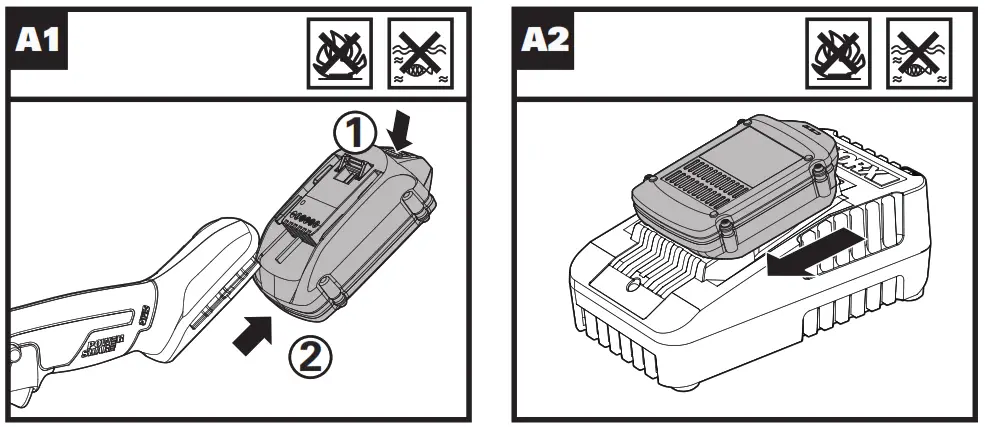

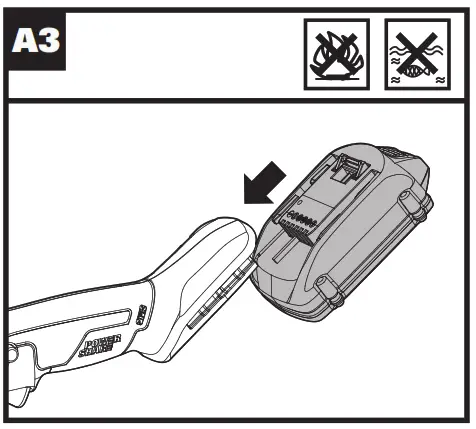



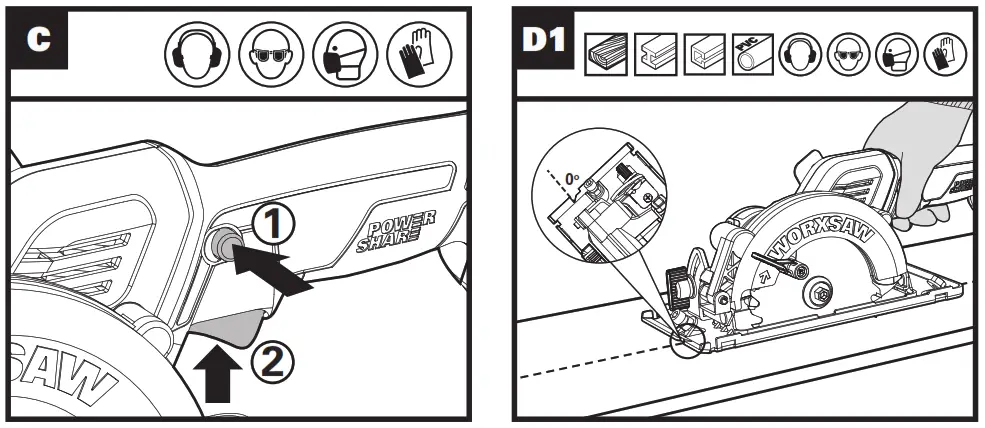

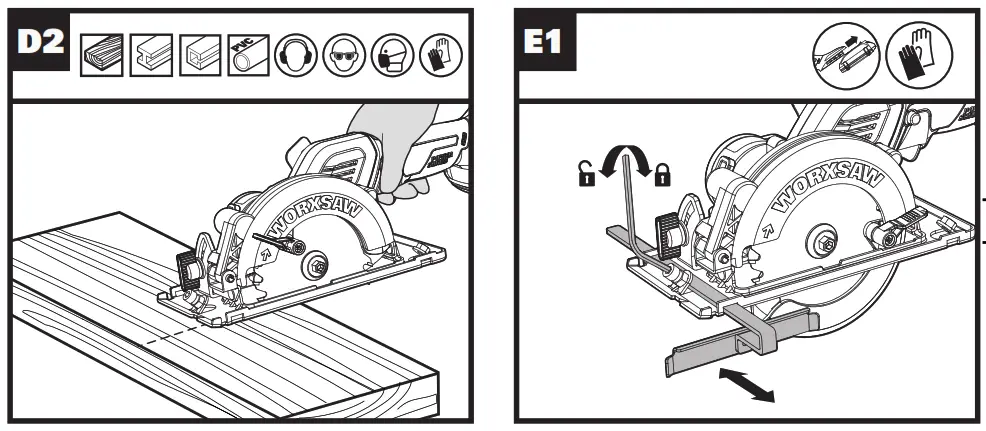

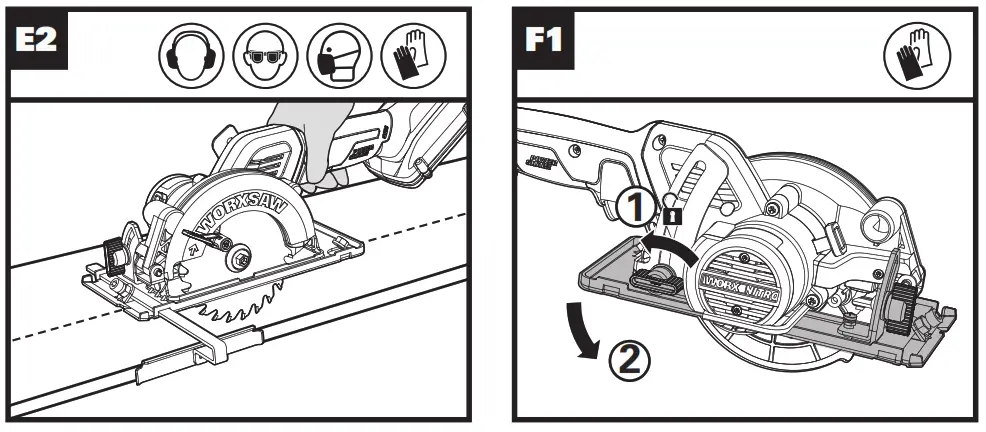



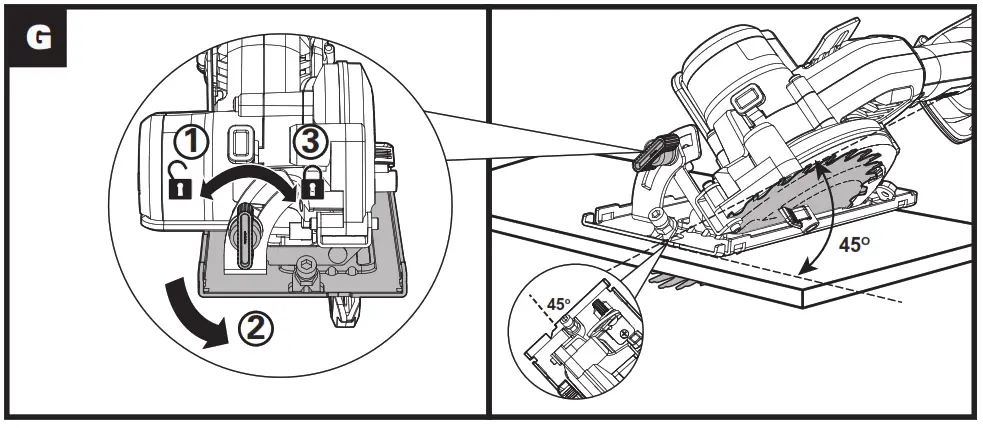

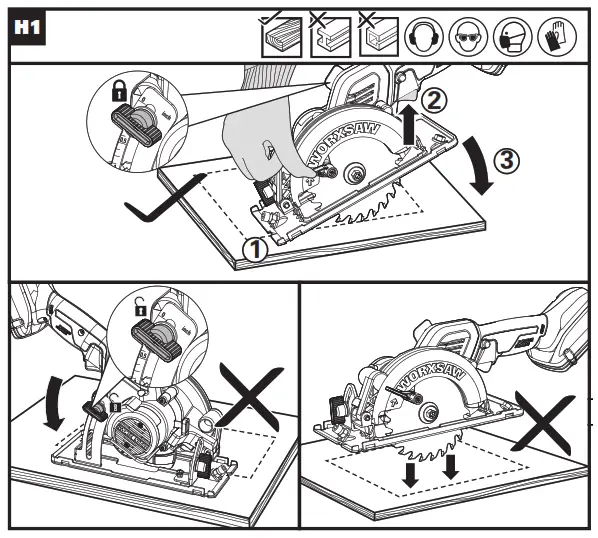

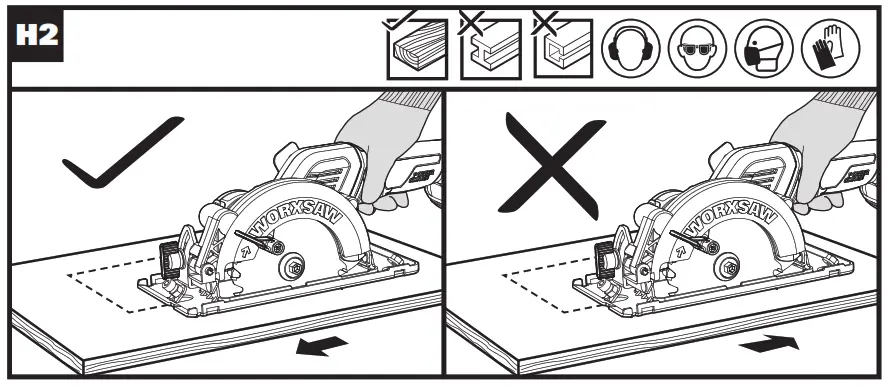



OPERATING INSTRUCTIONS


ASSEMBLY AND OPERATION
|
ACTION |
FIGURE |
| BEFORE OPERATION | |
| Removing the battery pack | See Fig. A1 |
| Charging the battery | See Fig. A2 |
| Installing the battery pack | See Fig. A3 |
| Mounting and Removing the Blade
NOTE: Lock or lose the blade bolt, the spindle lock button should be pressed.
|
See Fig. B |
| Safety switch and On/Off trigger
NOTE: Keep the dust adapter connected to the dust collecting device when using the tool. |
See Fig. C |
| Rip and Cross-Cutting
NOTE: The cutting line of the saw blade is aligned with the cutting mark 0°. |
See Fig. D1, D2 |
| Parallel Guide | See Fig. E1, E2 |
| Adjusting the Cutting Depth | See Fig. F1, F2 |
| Adjusting the Cutting Angle
NOTE: The cutting line of the saw blade is aligned with the cutting mark 45°. |
See Fig. G |
| Pocket /Plunge | See Fig. H1, H2 |
| Sawdust Removal | See Fig. I |
WORKING HINTS FOR YOUR TOOL
Your power tool shall not be used for cutting plastics. The blade may become very hot after prolonged usage, please do not touch it.
MAINTAIN TOOLS WITH CARE
Remove the battery before carrying out any adjustment, servicing, or maintenance.
Keep tools sharp and clean for better and safer performance. Follow instructions for lubricating and changing accessories. Inspect tool cords periodically and if damaged, have repaired by an authorized service facility. Your power tool requires no additional lubrication or maintenance. There are no user-serviceable parts in your power tool. Never use water or chemical cleaners to clean your power tool. Wipe clean with a dry cloth. Always store your power tool in a dry place. Keep the motor ventilation slots clean. Keep all working controls free of dust. Periodically clear dust and chips from guard and base to ensure proper performance.
FOR BATTERY TOOLSThe ambient temperature range for the use and storage of tool and battery is 0 o C-45 o C.The recommended ambient temperature range for the charging system during charging is 0 o C-40 o C.
TROUBLESHOOTING
| SYmPtom | Posted Canes |
Possible Solution |
| Tool will not start when operating the on/off trigger. | Battery park not plugged in.
Battery park is powered off. Carbon brush has worn down |
Check to make sure the battery pack is connected well into a working outlet. Charging the battery.
Replace the carbon brush using a qualified maintenance person. |
| Cutting depth is less than that is set. | Sawdust accumulated at the rear of the base. | Shake out sawdust. Consider connecting a vacuum for dust collection. |
| Blade spins or slips | Blade is not tightly engaged with the spindle. | Remove the blade and reassemble it as described in the Mounting and Removing the Blade section. |
| Blade will not cut a straight line. | Blade is dull.
Blade is not mounted properly. Saw is not being guided properly. |
Mount a new, sharp blade on the saw. Check that blade is properly mounted. Use a parallel guide. |
| Blade kicks back when beginning a cut | Saw blade teeth may be engaged in the material when starting.
Blade is not spinning fast enough |
Before restarting a saw in the workpiece, center the saw blade in the kerf and check that the saw teeth are not engaged in the material.
Allow the saw blade to reach full speed prior to beginning a cut in the material. |


www.worx.comCopyright © 2020, Positec. All Rights Reserved.© Derechos reservados 2020, Positec. Todos los derechos reservados. AR01474500
References
[xyz-ips snippet=”download-snippet”]

